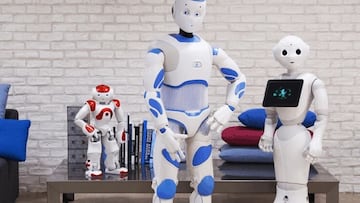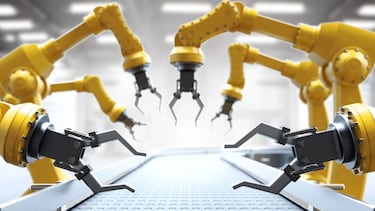Goodbye to traditional robots: this is the new material could change the future of robotics
A breakthrough from Canadian researchers brings us closer to robots that move with the power and grace of living organisms.

The robots of the future may look less like rigid metal contraptions and more like living organisms capable of moving with fluidity, precision and strength. A research team from the University of Waterloo in Canada has taken a crucial step in that direction with the creation of a super-resistant elastomeric material that could revolutionize soft robotics.
Published in Advanced Materials, the study combines liquid crystals – the same used in electronic screens – with liquid-crystal elastomers (LCE), a type of polymer that expands and contracts with heat. The result is a compound that remains flexible but delivers far greater tensile strength than traditional materials used so far.
“The so-called artificial muscles are the key to unlocking the true potential of soft robots. They ensure precision, safety and natural movement,” explained Dr. Hamed Shahsawan, professor of chemical engineering and director of the SMART Lab at the University of Waterloo.

A step closer to lifelike movement
The new material has proven to be nine times stronger and more flexible than its predecessors. According to the researchers, its fibers can lift loads 2,000 times their own weight and perform work equivalent to about 53 pounds – three times more than that of mammalian muscle.
The secret behind this power lies in the material’s internal structure. Using X-ray analysis, the team found that the liquid-crystal particles form tiny “pockets” inside the elastomer that act as solid reinforcements without compromising elasticity. This unique microstructure allows the material to combine strength, flexibility and durability – three properties that rarely coexist.
Soft robots, unlike conventional ones with rigid motors and gears, are designed to interact safely with people and operate in delicate environments, from surgical procedures to the handling of fragile electronic components. Yet one of the main challenges in this field has been the limited strength of the materials that enable their movement.

Toward new frontiers in robotics
With this latest breakthrough, that may be about to change. The combination of mechanical power and structural softness opens the door to new applications ranging from micro-surgical tools that mimic human hand movements to high-precision industrial assistants.
Looking ahead, Shahsawan’s team plans to use the improved LCE as “ink” for 3D printing, allowing the production of customized artificial muscles that move increasingly like living tissue.
With discoveries like this, soft robotics moves a little closer to its original dream: machines that move with the strength, subtlety and intelligence of the human body.
Related stories
Get your game on! Whether you’re into NFL touchdowns, NBA buzzer-beaters, world-class soccer goals, or MLB home runs, our app has it all.
Dive into live coverage, expert insights, breaking news, exclusive videos, and more – plus, stay updated on the latest in current affairs and entertainment. Download now for all-access coverage, right at your fingertips – anytime, anywhere.
Complete your personal details to comment